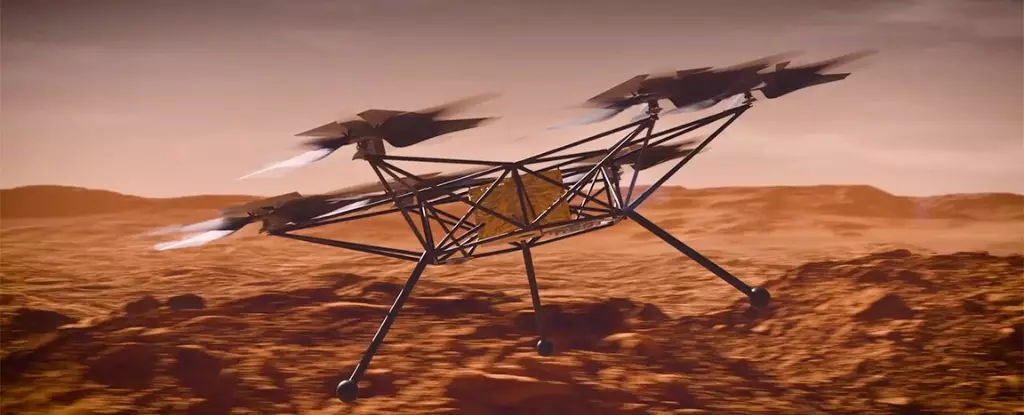In April 2021, a remarkable milestone was achieved when NASA’s Ingenuity helicopter successfully flew on Mars, marking the inaugural powered flight on an extraterrestrial body. This tiny rotorcraft was not merely an engineering feat; it represented humanity’s quest for innovation and exploration beyond our planet. Sent to the Red Planet as a part of the Perseverance rover mission, Ingenuity’s primary goal was to demonstrate that controlled, powered flight was feasible in Mars’ particularly sparse atmosphere, which is less than one percent as dense as Earth’s.
The helicopter made its historic first flight on April 19, 2021, ascending a mere 10 feet above the dusty Martian landscape before safely returning to the surface. Each subsequent flight built on this success, with Ingenuity ultimately completing 60 missions. These flights have not only underscored the potential for aerial exploration on Mars but have provided critical data and imagery for the scientific community, directing future missions to promising sites for investigation.
Operating any aerial vehicle on Mars is a complex undertaking fraught with challenges. The thin atmosphere poses inherent difficulties for generating lift, forcing engineers to develop rotor designs capable of achieving flight in a medium dramatically different from what we encounter on Earth. It is not just about the reduced atmospheric density; the Martian environment is also beset with dust storms and abrasive particles that could significantly jeopardize the machinery and electronics of unmanned aerial vehicles (UAVs).
This is where Ingenuity has set the stage for the evolution of Martian aerial vehicles. Its successful flights have provided invaluable insights into the design and operational parameters necessary to thrive in such an environment. The lessons learned will fundamentally shape the development of subsequent aerial exploration vehicles.
Building on the success of Ingenuity, NASA has unveiled a futuristic design concept for what is called the Mars Chopper. This next-generation aerial craft is expected to feature enhancements that will greatly increase operational efficiency and versatility. Unlike its predecessor, the Mars Chopper is envisaged as a significantly larger vehicle, comparable in size to an SUV and equipped with six rotors. Each rotor is designed with six blades, a configuration intended to provide improved lift capabilities while managing the debris-laden atmosphere that characterizes Mars.
One of the most critical advancements with the Mars Chopper is its elevated payload capacity. The new drone is intended to carry scientific instruments weighing up to 5 kilograms for missions that may extend as far as 3 kilometers from its point of origin. This enhanced capability will allow for extensive aerial surveying, high-resolution imagery, and geological analysis, all of which are pivotal for deepening our understanding of Mars’ complex landscape and history.
The evolution from Ingenuity to Mars Chopper symbolizes a seismic shift in our approach to extraterrestrial exploration. As opposed to relying solely on rovers confined to the surface, the Chopper’s ability to scout large areas from the air could revolutionize data collection and scouting processes. It can scout terrain for potential landing sites, direct surface missions, and conduct scientific investigations that ground vehicles may not reach due to challenging landscapes.
Furthermore, as we eye potential human exploration of Mars, such aerial vehicles offer an unprecedented tactical advantage. They can provide reconnaissance and support that may alleviate logistical difficulties faced by human crews, paving the way for a more seamless exploration experience.
The release of the Mars Chopper conceptual design heralds an exciting era in the quest for knowledge about Mars and beyond. Building on the foundational success of Ingenuity, this new aerial vehicle stands at the intersection of engineering innovation and scientific discovery. The implications for deep space exploration are profound, shifting from terrestrial paradigms of exploration to pioneering new frontiers in celestial navigation and research. As the skies of Mars become increasingly populated with flying machines designed to probe and reveal the planet’s secrets, the dream of understanding our neighboring worlds comes within closer reach.


Leave a Reply